 W
WThe Bubali Wetlands form a 53 ha wetland area at the north-western end of the island of Aruba, a constituent country of the Dutch Caribbean. It has been identified as an Important Bird Area by BirdLife International because it and its surrounding vegetation support populations of a variety of birds, including threatened and restricted-range species as well as large seasonal numbers of migratory waders and neotropical passerines. Originally created as a wastewater treatment facility, the wetland is threatened by encroachment of aquatic vegetation decreasing the area of open water.
 W
WThe Dos Pos Important Bird Area lies on the leeward side of the northern end of the island of Bonaire in the Caribbean Netherlands. It is a 234 ha former fruit plantation, adjacent to the Washington Slagbaai National Park, that has been identified by BirdLife International as an Important Bird Area (IBA) because it supports populations of several threatened or restricted-range bird species. The landscape is one of small hills and sheltered valleys with remnant fruit trees, mainly mangoes, and a small ephemeral pond. Threats to the unprotected site are habitat degradation by feral donkeys, goats and pigs, predation by introduced cats and rats, and poaching for the pet trade.
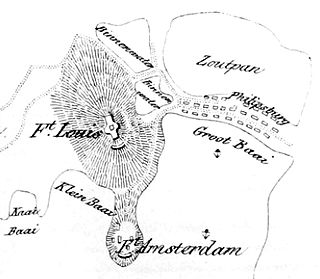 W
WFort Amsterdam is a historic fort on the island of Saint Martin, near the Sint Maarten town of Philipsburg.
 W
WFresh Pond is a 14 ha water body in the country of Sint Maarten on the island of Saint Martin in the Dutch Caribbean. It has been identified as an Important Bird Area by BirdLife International because it supports populations of various threatened or restricted-range bird species. Some 2.5 km long by 1 km across, it lies within the capital city of Philipsburg. Because of its low salinity, it supports species which are less common in other parts of the island. The pond is bordered with reeds, mangroves and coconut palms. American coots have been recorded breeding at the site, as well as snowy egrets, pied-billed grebes, common moorhens, great egrets, white-cheeked pintails and ruddy ducks. Other birds for which the IBA was designated include green-throated caribs, Antillean crested hummingbirds, Caribbean elaenias, pearly-eyed thrashers and lesser Antillean bullfinches.
 W
WGreat Salt Pond is a 188 ha water body in the country of Sint Maarten on the island of Saint Martin in the Dutch Caribbean. It has been identified as an Important Bird Area by BirdLife International because it supports a large seasonal aggregation of laughing gulls. It borders the capital city of Philipsburg and is the largest pond on the island. It has a high salinity and suffers pollution from landfill and urban runoff.
 W
WJan Thiel Lagoon is an 80 ha area of hypersaline lagoons, surrounded by woodland, on the southern coast of Curaçao, a constituent island nation of the Kingdom of the Netherlands in the Dutch Caribbean. It is adjacent to the capital, Willemstad. The site, comprising the lagoons, woodland and adjacent coastal waters, has been identified as a 432 ha Important Bird Area by BirdLife International. Birds for which the site was designated include breeding colonies of least and common terns. It is also an important foraging area for American flamingos.
 W
WKlein Bonaire is a small uninhabited islet off the west coast of the Caribbean island of Bonaire, and is part of the Dutch special municipality of Bonaire.
 W
WKlein Curaçao is a 1.7-square-kilometre uninhabited island belonging to, and lying 10 km south-east of, Curaçao, a constituent country of the Kingdom of the Netherlands in the Dutch Caribbean.
 W
WLac Bay is a shallow bay on the south-eastern coast of the island of Bonaire in the Caribbean Netherlands. It has a fringing reef at its mouth and contains about 100 ha of mangroves as well as a small harbour for fishing vessels. Its seagrass beds are used by sea turtles. It has been designated a Ramsar site as a wetland of international importance.
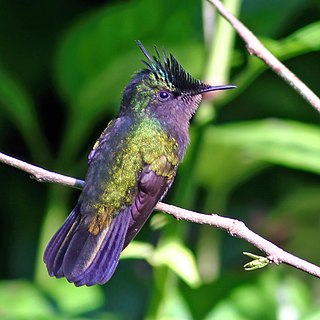 W
WLittle Bay is an 8 ha coastal pond in the country of Sint Maarten on the island of Saint Martin in the Dutch Caribbean. It has a low salinity and lies near the capital, Philipsburg. It has been identified as an Important Bird Area by BirdLife International because it supports threatened or restricted-range bird species. Birds for which the IBA was designated include green-throated caribs, Antillean crested hummingbirds, Caribbean elaenias, pearly-eyed thrashers and lesser Antillean bullfinches. Pied-billed grebes, common moorhens, American coots, white-cheeked pintails and ruddy ducks have been recorded nesting at the site.
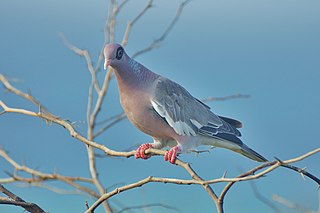 W
WThe Malpais–St Michiel Important Bird Area is a 1,100 ha tract of land, a former plantation just north of Sint Michiels Bay, on the southern coast of Curaçao, a constituent island nation of the Kingdom of the Netherlands in the Dutch Caribbean. It has been identified as an Important Bird Area by BirdLife International because it supports populations of bare-eyed pigeons, American coots, common terns and Caribbean elaenias, as well as a large brown-throated parakeet roost. It comprises two wetlands – a freshwater dam and a saline lagoon – with their surrounding thorn scrub vegetation. The waterbodies are used by a variety of waterbirds, including American flamingos, and the vegetation is used by resident and migratory passerines as well as by wintering raptors. The area has also been recognised as a Ramsar site as a wetland of international importance.
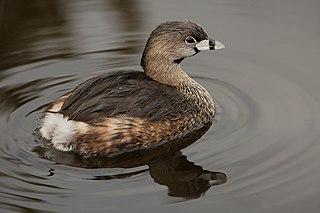 W
WThe Muizenberg Important Bird Area comprises a 150 ha wetland area, including an intermittent shallow lake (Muizenberg) and smaller pond. The site lies within the northern suburbs of Willemstad, the capital of Curaçao, a constituent island nation of the Kingdom of the Netherlands in the Dutch Caribbean. It has been identified as an Important Bird Area by BirdLife International because it supports American coots. Common moorhens, pied-billed grebes and white-cheeked pintails breed there and American flamingos feed there. The 64 ha Muizenberg lake has been recognised as a as a wetland of international importance by designation as a Ramsar site.
 W
WThe North-east Curaçao parks and coast Important Bird Area is a 13,554 ha tract of land in Curaçao, a constituent island nation of the Kingdom of the Netherlands in the Dutch Caribbean. It encompasses much of the north-western end of the island, including the Christoffel and Shete Boka National Parks, as well as a strip of coast from there half-way down the northern side of the island. It has been identified as an Important Bird Area by BirdLife International because it supports populations of bare-eyed pigeons and Caribbean elaenias, as well as a major breeding colony of least terns.
 W
WThe Oranjestad Reef Islands lie just off the western coast of the island of Aruba, a constituent island nation of the Kingdom of the Netherlands in the Dutch Caribbean, adjacent to the central harbour of the capital Oranjestad. They form a 309 ha site encompassing sand and boulder coral islets, on a substrate of submerged reef, which can vary in size and shape following winter storms and hurricanes. The area has been identified as an Important Bird Area by BirdLife International as a breeding site for Sandwich and common terns.
 W
WPelikan Rock is a small rocky islet, about 1 ha in area, lying to the south-east of the coast of the island of Saint Martin, and belonging to the country of Sint Maarten in the Dutch Caribbean. It, along with the waters of the surrounding marine park, has been identified as a 328 ha Important Bird Area by BirdLife International because it supports nesting colonies of seabirds, including brown pelicans, laughing gulls, royal terns and, probably, Audubon's shearwaters.
 W
WThe Pelkermeer Saltworks is a 6,851 ha saltern at the southern end of the island of Bonaire in the Caribbean Netherlands. Originally a series of natural shallow lagoons, it has been modified over centuries to enable salt production. It has been identified as an Important Bird Area (IBA) by BirdLife International. Within the saltern there is a 55 ha reserve established to protect a breeding colony of about 5,000 American flamingos. The IBA also supports populations of least, common, sandwich and royal terns, as well as large numbers of migratory waders. The saltern has been designated a Ramsar site as a wetland of international importance.
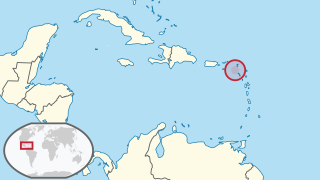 W
WSaba is a Caribbean island which is the smallest special municipality of the Netherlands. It consists largely of the potentially active volcano Mount Scenery, which at 887 metres (2,910 ft) is the highest point of the entire Kingdom of the Netherlands. The island lies in the northern Leeward Islands portion of the West Indies, southeast of the Virgin Islands. Together with Bonaire and Sint Eustatius it forms the BES islands.
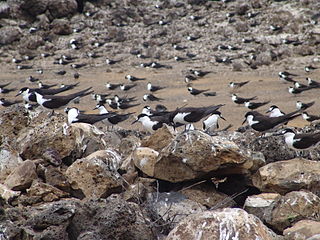 W
WThe San Nicolas Bay Reef Islands lie just off the south-eastern end of the island of Aruba, a constituent island nation of the Kingdom of the Netherlands in the Dutch Caribbean, adjacent to the island's second largest city San Nicolaas, from which it separated by a shallow lagoon. They form a 248 ha site encompassing five small boulder coral islets, on a substrate of submerged reef, which can vary in size and shape following winter storms and hurricanes. Three of the islets are covered with salt-resistant plants dominated by buttonwood, sea purslane and bay cedar. Aruban whiptail lizards have been recorded there. The area has been identified as an Important Bird Area by BirdLife International as a breeding site for several species of terns.
 W
WTierra del Sol Salina is a 1 ha natural saliña, surrounded by desert scrub vegetation, lying within the golf-course of the Tierra del Sol Resort, Spa & Country Club at the north-western end of Aruba, a constituent island nation of the Kingdom of the Netherlands in the Dutch Caribbean. It periodically contains water, and has a natural flow to the sea. It has been identified as an Important Bird Area by BirdLife International as a breeding site for great and snowy egrets, American coots and white-cheeked pintails when it contains water, as well as serving as a roost site for roseate and Sandwich terns, and black skimmers. It is also used during the spring and autumn migration seasons by waders while the surrounding vegetation supports neotropical passerines, especially warblers. Bare-eyed pigeons are resident.
 W
WThe Washikemba–Fontein–Onima Important Bird Area is a 5,959 ha strip of land along the north-eastern coast of the island of Bonaire in the Caribbean Netherlands. It has been identified as an Important Bird Area by BirdLife International because it supports populations of various threatened or restricted-range bird species. It contains three freshwater reservoirs as well as arid scrubland and some introduced fruit trees. Birds for which the IBA was identified include bare-eyed pigeons, American coots, least terns, yellow-shouldered amazons, Caribbean elaenias and pearly-eyed thrashers. Potential threats to the site come from illegal trapping of the parrots, habitat destruction by feral donkeys and goats, predation by feral cats, and human disturbance of nesting colonies.
 W
WWashington Slagbaai National Park is a national park and ecological reserve on the northwestern part of the island of Bonaire in the Caribbean Netherlands. The 5,643 hectares (21.79 sq mi) park covering approximately a fifth of the island of Bonaire is managed by STINAPA Bonaire, a non-profit foundation, on behalf of the Bonaire government. Established in 1969, Washington Slagbaai National Park was the first nature reserve to be established in the former Netherlands Antilles.